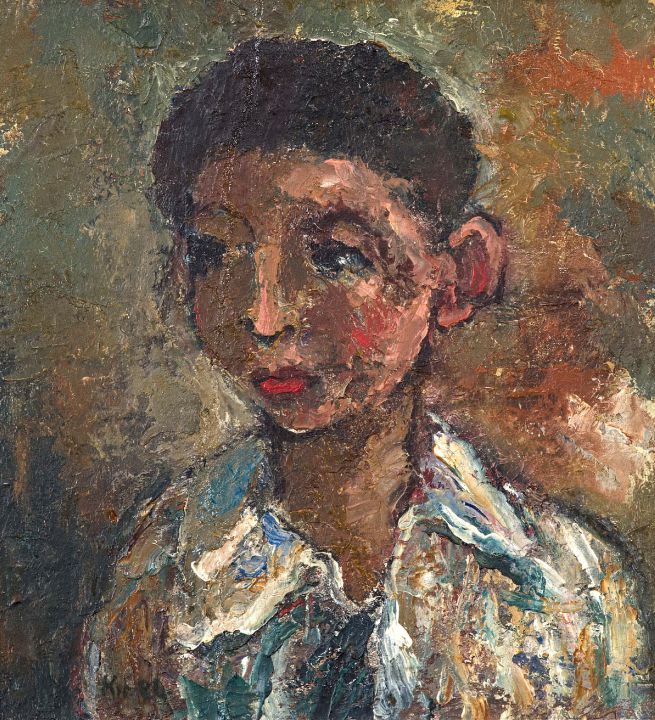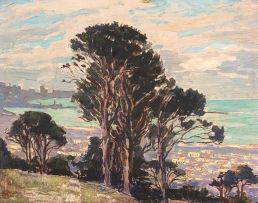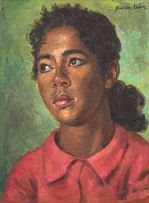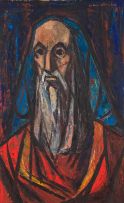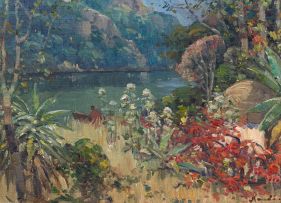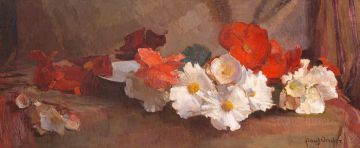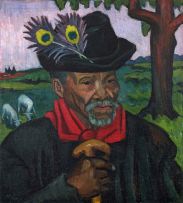Important South African and International Art, Decorative Arts & Jewellery
Live Auction, 16 October 2017
Evening Sale
Incl. Buyer's Premium & VAT
About this Item
signed
Notes
Accompanied by a letter confirming provenance.
Wolf Kibel's acclaim rests on a compact body of work produced in the period between his arrival in Cape Town in 1929 and premature death, at age 35, from tuberculosis. Part of a vanguard of artists who modernised the form of South African painting in the 1930s, Kibel translated the various innovations of European painterly modernism into a personal idiom marked by what Esmé Berman typified as "exaggerated colour contrasts and expressionistic distortions".¹ The importance of his "raw style of sketchy, unsure contours" remains important in understanding the evolution of neo-expressionist artists such as William Kentridge.² Kibel was competent across a range of genres, including still life, urban landscape, domestic interior and the nude. He also produced a handful of portraits, including vivid and affecting studies of young sitters that point to the influence of Chaïm Soutine. However, unlike this Russian-French painter, who made charged studies of pastry cooks, pageboys, choirboys, valets and waiters, Kibel did not assign recognisable vocations to his sitters. While faithful to the figure, Kibel's portraits are not mere transcriptions of reality. As Neville Dubow noted: "Always he was after something more elusive; something at once personal and yet general."³ The eruptive surfaces and dissonant colours of this composition suggest a painter's complex engagement with material as much as subject.
1 Esmé Berman, 'Introduction - Wolf Kibel', leaflet accompanying memorial exhibition for artist held in Pretoria, May 1966.
2 Carolyn Christov-Bakargiev. (1998) William Kentridge, Brussels: Société des Expositions du Palais des Beaux-Arts, page 26.
3 Neville Dubow. (1968) 'Wolf Kibel: A Critical Assessment of his Work', in Wolf Kibel, Cape Town: Human & Rousseau, page 43.
Provenance
Gregoire Boonzaier, and thence by descent.
